Really appreciated you sharing this recipe with us. It's a game-changer!
Yakitori with Salt Recipe ( Yakitori Shio 焼き鳥塩 )
Recipes > Japanese Recipes > Japanese Side Dish Recipes

Yakitori Shio, a simple yet captivating dish, showcases how minimal ingredients can produce maximum flavor. Hailing from bustling Japanese street food scenes, Yakitori is a testament to the art of grilling. "Yaki" means to grill, and "tori" translates to bird, underscoring the dish's essence. The Shio variant, meaning salt, relies on this singular seasoning to amplify the natural, savory goodness of chicken.
In the heart of Tokyo, amid neon lights and the continuous hum of the city, you'd find locals and tourists alike flocking to Yakitori stands, drawn by the enticing aroma of charred meat. With every sizzle and every flip, stories unfold — of friendships, of long days, of celebrations, and simple pleasures.
Using only chicken, onions, oil, and salt, Yakitori Shio is a humble reminder that sometimes, simplicity reigns supreme. This dish doesn't hide behind fancy spices or intricate cooking methods; it's straightforward, honest, and incredibly delicious. The beauty of Yakitori Shio is in its details: the slight char on the chicken, the crunch of the onions, and the sprinkle of salt that ties everything together. So, let's embark on a culinary trip to the vibrant streets of Japan and embrace the pure magic of Yakitori Shio!
JUMP TO:
INGREDIENTS:
Chicken Thighs, Moisture and Marbling: When sourcing chicken thighs for Yakitori, seek out pieces with even marbling. The little bits of fat interspersed within the meat ensure juiciness and flavor as they melt during grilling. Ideally, opt for organic or free-range chicken as these often offer a superior taste profile. Butchers or poultry specialists might also have specific cuts or grades ideal for grilling.
Onions, Crunch and Sweetness Balance: The choice between long white onions and green onions plays a significant role in the final flavor profile:
Long White Onions: These provide a milder, slightly sweet taste and are less pungent than their green counterparts. When selecting, look for firm bulbs with a smooth outer skin. The outer layers should be free from dark spots or any signs of sprouting.
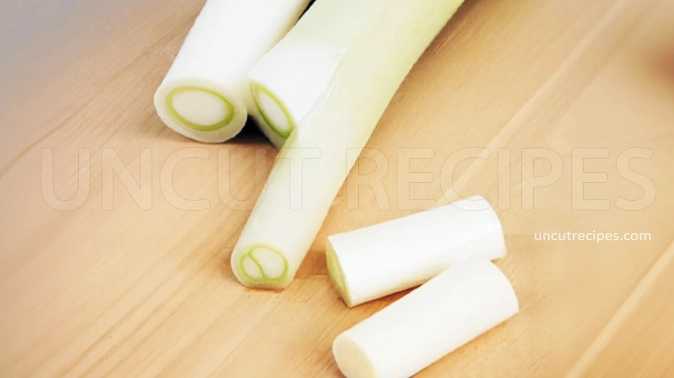
Green Onions (Scallions): If opting for this alternative, choose stalks that are straight, firm, and bright green. They offer a sharper, fresher flavor which can contrast nicely with the savory chicken.
Salt, Crystalline Size Matters: The salt used in Yakitori Shio isn't just for seasoning but also plays a role in texture. Opt for a slightly coarser salt rather than the fine table variety. This provides a pleasant crunch and a burst of flavor with each bite. Sea salt or kosher salt, owing to their larger grain size, are ideal. If you want to experiment, Japanese specialty salts, like Okinawan or Moshio, can introduce subtle mineral nuances to the dish.
MAIN STEPS:
Skewering Uniformity: For even cooking and a beautiful presentation, ensure each chicken piece is of a consistent size. This might mean discarding or cooking separately any bits that don't conform to your standard size. Similarly, with onions, ensure each piece has a similar thickness. This not only helps with even cooking but makes eating more enjoyable, avoiding any unwieldy large pieces that might be awkward to bite.
Chicken Thighs, Embrace the Fat: One of the reasons chicken thighs are preferred for Yakitori is their higher fat content compared to other parts like the breast. This fat renders down during cooking, ensuring juicy, flavorful results. However, if you notice excess fat while cutting, feel free to trim a bit. But remember, a little fat is a good thing here!
Pan Grilling, Mind the Heat: When cooking Yakitori in a frying pan, it's essential to monitor the heat level. A pan that's too hot might give you beautifully browned Yakitori on the outside but leave it undercooked within. Conversely, too low heat might result in overcooked, dry Yakitori.
Salt Application: For Yakitori Shio, the flavor should be simple and clear – letting the quality of the chicken and the grilling method shine. Over-salting can overshadow these primary flavors. When seasoning, it's always a good idea to start with less; guests can always add more if they desire. Consider serving with a small dish of salt on the side for those who prefer a little extra.
SERVED WITH:
Starter: Edamame (Japan): Steamed young soybeans, lightly salted. This simple dish offers a fresh, slightly nutty taste, making it a perfect light start to complement the savory flavor of Yakitori.
Side Dish: Tsukemono (Japan): A variety of pickled vegetables. The tangy and crunchy texture of these pickles offers a contrast to the grilled meat, cleansing the palate in between bites.
Main Course: Yaki Udon (Japan): Stir-fried udon noodles with vegetables and occasionally meat or seafood. This hearty noodle dish, with its savory sauce, complements the simplicity of salt-grilled Yakitori.
Salad: Sunomono (Japan): A light, refreshing cucumber salad often made with wakame seaweed and dressed in vinegar. This cold dish provides a fresh counterpoint to the warm, grilled flavors of the Yakitori.
Dessert: Taiyaki (Japan): A fish-shaped cake, often filled with sweetened red bean paste. This sweet ending has a crispy outer layer and soft, sweet filling which would be a delightful contrast after the savory skewers.
Drink: Sapporo Beer (Japan): A crisp and refreshing Japanese lager. The effervescence and slight bitterness of the beer can complement the charred and salty flavors of the Yakitori.
ALTERNATIVES:
Appetizer: Salt and Pepper Chicken Wings (USA): Crunchy, deep-fried chicken wings seasoned primarily with salt and pepper. The focus, like with Yakitori, remains on the flavor of the chicken enhanced with just basic seasonings.
Main Course: Spatchcocked Grilled Chicken (Mediterranean): A whole chicken flattened and grilled with just olive oil, salt, and perhaps some lemon. The grilling technique brings out the rich flavors of the chicken.
Starter: Chicken Satay (Thailand): Skewered and grilled chicken served with a peanut sauce. Though there's a sauce involved, the base idea remains – skewered, grilled chicken, akin to Yakitori.
Side Dish: Grilled Leeks with Romesco Sauce (Spain): Leeks, grilled to perfection, and served with a nut and red pepper-based sauce. The char on the leeks and the simplicity of the dish evoke similar feelings to eating Yakitori.
Main Course: Shish Taouk (Middle East): Marinated chicken skewers grilled to golden perfection. Often, the marinade is yogurt-based with simple seasonings, emphasizing the chicken's taste.
Dessert: Grilled Pineapple (USA): Pineapple slices, sometimes sprinkled with a touch of salt or cinnamon, and grilled until caramelized.
HISTORY:
Literally translated as "grilled chicken," yakitori is a Japanese dish consisting of skewered and grilled chicken. Its origin dates back to the Heian period (794 to 1185). With the introduction of Buddhism to Japan, eating red meat was discouraged, leading to an increase in poultry consumption. As urban centers began to develop and expand during the Edo period (1603 to 1868), the popularity of street food grew. It was during this time that yakitori as a street food really took off.
Yakitori, being a highly social food, is often associated with camaraderie and bonding. Historically, yakitori stalls would cluster around train stations, offering a quick bite for commuters. In post-war Japan, especially during the economic boom, yakitori-ya (yakitori joints) became popular spots for salarymen to unwind after work. The straightforward 'shio' flavor, in particular, was beloved for its pure and uncomplicated taste, allowing for the drink of choice, often beer or sake, to shine alongside.
Among the myriad of flavors and marinades that yakitori can be served with, the 'shio' or salted version stands as a testament to the Japanese philosophy of simplicity. By using just salt to season the chicken, the natural flavors and juices of the meat are accentuated when grilled. This straightforward seasoning has its roots in Japan's love for the minimalist approach in cuisine, which focuses on enhancing the ingredient's inherent flavors.

Over the decades, yakitori has undergone various innovations, with chefs introducing diverse marinades and ingredients. However, Yakitori Shio has always retained its position as a classic favorite. Its minimalist flavor profile resonates with both the older generation, who appreciate its traditional roots, and the younger crowd, who value its unpretentious, straightforward taste.
TIPS:
Charcoal Grilling: Traditional Yakitori is cooked over binchotan charcoal. If possible, grilling over binchotan or another high-quality charcoal will impart a unique, smoky flavor that elevates the dish.
Rest Before Serving: After cooking, allow the skewers to rest for a few minutes. This ensures that the juices redistribute within the meat, resulting in juicier Yakitori.
Brining for Flavor: This not only seasons the chicken but also helps retain moisture during cooking, resulting in juicier Yakitori.
Method: Before skewering, consider brining the chicken pieces in a solution of salt and water (about 4% salt by weight) for about 30 minutes.
Adding Umami: This introduces an umami flavor and a glossy appearance to the skewers.
Method: Brush the skewers with a light coat of soy sauce mixed with sake (3:1 ratio) during the last few minutes of cooking.
Enhanced Seasoning: It gives a more complex flavor profile, enhancing the simple salt seasoning.
Method: Use flavored salts, like Yuzu Kosho Salt or smoked salt, for seasoning.
Skin-on Technique: The skin, when crisped up during cooking, adds a delightful texture contrast and extra flavor.
Method: Use chicken thighs with the skin on. When skewering, alternate between skin-on pieces and skinless pieces.
Recipe Information
Skill Level
|
Time 45 Minutes |
Price
|
Makes 5 to 40 Skewers |
| Healthiness |
Nutritional Information |
| Ratings (Add Rating & Review) |
Reviews 11 Reviews |
Ingredients:
-
3.5 cups Chicken Thighs
2 Long White Onions
( or 5-6 Green Onions )
Salt
Vegetable Oil
Allergens
| Based on the ingredients of this recipe, there are no common allergens present such as gluten, dairy, eggs, soy, peanuts, tree nuts, fish, shellfish, or sesame. However, if any of the ingredients were processed in a facility that also processes allergens, there could be a risk of cross-contamination. It's always best to check the packaging and labels of each ingredient to make sure there are no allergen warnings. |
Directions:
Preparing the Skewers:
01 - Submerge your Bamboo Skewers in water for at least 30 minutes. This step ensures they won't char or burn when you're cooking.
02 - Take your Chicken Thighs and chop them into bite-sized cubes, roughly 2.5cm (1 inch) in size.
03 - Do the same with the white parts of the Onions, chop them into 2.5cm (1 inch) pieces.
04 - Now, it's time to make the skewers! Begin by threading a piece of Chicken onto a skewer, followed by a piece of Onion. Continue this pattern until the skewer is full.
Cooking and Serving Yakitori:
05 - Lightly brush a frying pan with some Oil. Heat it up to medium-high.
06 - Place the filled skewers in the pan and let them cook for about 10 minutes. You'll know they're done when they have a nice brown color and are fully cooked on the inside.
07 - Once cooked, sprinkle a pinch of Salt over the Yakitori. Enjoy!
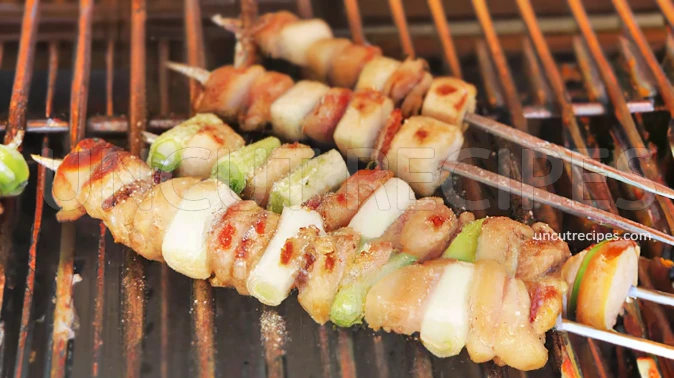
Notes:
Meat Options: If you don't have chicken thighs or prefer a different part of the chicken, you can also use chicken breast. It'll be a bit leaner but can work well if cooked carefully to avoid drying out. Chicken wings or drumettes can also be skewered and used for Yakitori.
Vegetarian/Vegan Options: For a plant-based version, you can use firm tofu cubes, tempeh, or even button mushrooms. Make sure to press the tofu first to get rid of excess moisture.
Seafood Options: Pieces of firm fish like salmon or prawns can also be skewered and grilled in the style of Yakitori.
Skewer Options: If you're out of bamboo skewers, you can also use metal skewers. Remember, metal skewers will heat up, so be cautious when handling.
Onion Choices: While white onions and green onions are the standard for Yakitori, if you're in a pinch, you can also use shallots or red onions. The flavor profile will change slightly but still be delicious.
Cooking Methods: For a more authentic taste, grilling the Yakitori over charcoal can impart a smoky flavor that many find irresistible.
You can also use an oven broiler setting to cook your Yakitori. Place the skewers on an oven-proof rack set over a tray and broil, turning occasionally, until browned and cooked through.
Serving Suggestions: While Yakitori with salt (Shio) is a simple and delicious dish on its own, it can be paired with a side of steamed rice, pickled vegetables, or a light salad to make a complete meal.
Storing Yakitori: If you have any leftover Yakitori, let them cool down first. Place them in an airtight container and refrigerate for up to 2 days. To reheat, you can use a pan over medium heat until they're warm throughout.
Nutritional Information
( Per Portion )
|
Calories |
80 kcal (4%) |
| Total Carbohydrate | 2g (0.67%) |
| Cholesterol | 25mg (8.3%) |
|
Total Fat |
6g (9.2%) |
| Saturated Fat | 1.5g (7.5%) |
| Polyunsaturated Fat | 1.2g |
| Monounsaturated Fat | 2.8g |
| Trans Fat | 0g |
| Fibers | 0.2g (0.8%) |
| Protein | 6g (12%) |
| Sugar | 1g (4%) |
|
Vitamin A |
40 IU (0.8%) |
|
Vitamin B1 (Thiamin) |
0.05mg (4.2%) |
| Vitamin B2 (Riboflavin) | 0.04mg (3.1%) |
| Vitamin B3 (Niacin) | 2.5mg (15.6%) |
| Vitamin B5 (Pantothenic Acid) | 0.7mg (14%) |
| Vitamin B6 | 0.3mg (17.6%) |
| Vitamin B7 (Biotin) | 2mcg (6.7%) |
| Vitamin B9 (Folate) | 5mcg (1.25%) |
| Vitamin B12 | 0.3mcg (12.5%) |
| Vitamin C | 1mg (1.67%) |
| Vitamin D | 5 IU (1.25%) |
| Vitamin E | 0.4mg (2.67%) |
| Vitamin K | 2mcg (2.67%) |
| Choline | 20mg (3.64%) |
| Carnitine | 10mg |
|
Calcium |
8mg (0.8%) |
|
Chloride |
150mg (3.5%) |
| Chromium | 0.5mcg (0.41%) |
| Copper | 0.04mg (4.44%) |
| Fluoride | 0.05mg |
| Iodine | 3mcg (2%) |
| Iron | 0.5mg (2.8%) |
| Magnesium | 8mg (1.9%) |
| Manganese | 0.1mg (4.35%) |
| Molybdenum | 5mcg (6.67%) |
| Phosphorus | 45mg (6.5%) |
| Potassium | 100mg (2.1%) |
| Selenium | 10mcg (18.2%) |
| Sodium | 400mg (17%) |
| Sulfur | 20mg (000%) |
| Zink | 0.4mg (3.6%) |
* Percent Daily Values are based on a 2,000 calorie diet. Your daily values may be higher or lower depending on your calorie needs.
** Nutrient information is available for all ingredients in this recipe. Amount is based on available nutrient data collected from all over the internet.
(-) Information is not currently available for this nutrient. If you are following a medically restrictive diet, please consult your doctor or registered dietitian before preparing this recipe for personal consumption. |
| Written by: Uncut Recipes | Disclaimer |


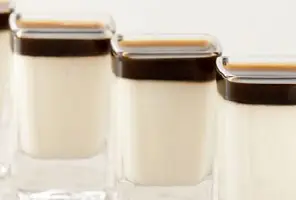
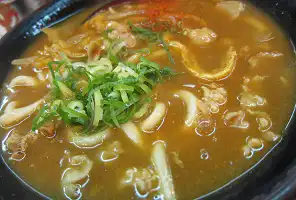
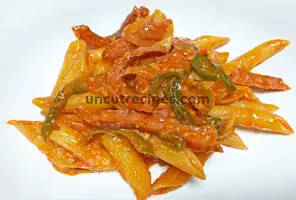
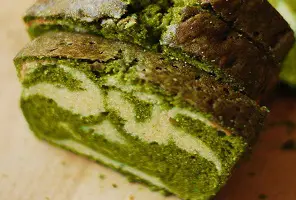
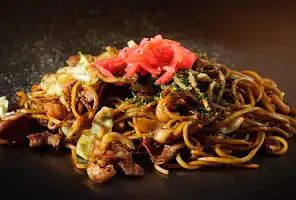



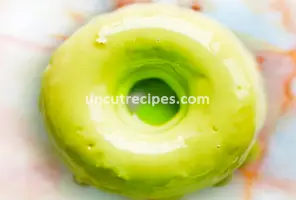



September 28, 2023
I've tried various Yakitori dishes, but this salted version is my top pick.